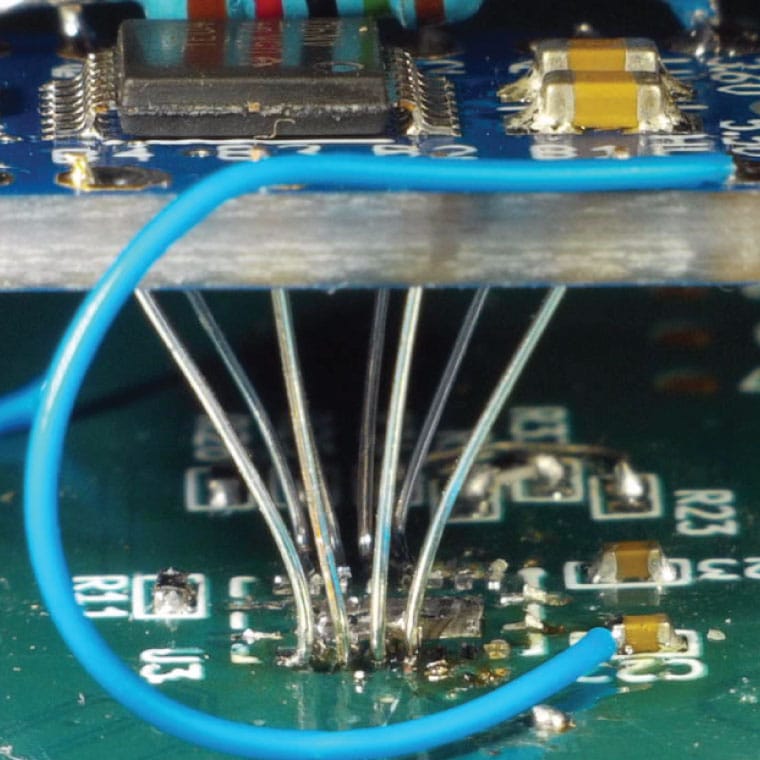BLOG
Silicon Shortage Is a Golden Opportunity for Smart Product Development
Yes, silver linings exist, even when silicon is in short supply. It’s all about perspective — and about using Agile methodologies to get a head start on smart product development.
Innovators Are Getting Ahead During the Silicon Shortage

While the current silicon shortage might be panic-inducing, it could very well be a golden opportunity for hardware developers. The shortage — brought on by a perfect storm of just-in-time logistics, limited production, and increased demand — is putting seismic pressure on hardware developers to innovate. With Industry 4.0 looming, this challenge could prove to be a boon of growth for companies moving towards developing IoT and connected devices.
Companies that start developing their products now will be ahead of the manufacturing curve when chip supplies replenish. While your competitors continue fumbling towards an MVP, you’ll be able to stride forward with a strategic smart product that customers genuinely want. Innovators are fast-tracking those initiatives now.
How the Silicon Shortage Impacts IoT Product Developers
The Challenge: Tech product development leaders need to build scalable products while remaining adaptable to volatile markets or risk losing their competitive foothold.
Development in the tech industry is known to be notoriously slow, and the chip shortage is only adding fuel to the fire. What’s more, the high cost of entry to build quality silicon chips keeps new manufacturers from entering the market, causing mounting concerns and nightmare logistics issues across industries.
If you’re in the middle of a stalled product development project and you’re acutely feeling those pains, we’re truly sorry.
Industry leaders have two viable paths out of the chip shortage:
- Put product development efforts on hold until there is more certainty in the supply chain. Risk killing profitability and scaling.
- Lean into rapidly increasing consumer demand and expectations for smart technologies. Use stalled time to get ahead of the coming IoT product development wave and stay there.
The Golden Opportunity
Being early to market allows companies to gather feedback, iterate faster, and outclass the competition that’s bogged down in development. But it’s not enough to simply start a project. You’ll need to use Agile methodologies and work with a deeply knowledgeable, multidisciplinary team. You also need to start now.

Agile Methods Solve for Changing Conditions in Hardware: Agile’s reactive feedback helps companies navigate rapidly changing landscapes, giving them ample padding to adapt. (E.G. Due to the silicon shortage, faulty chips have slipped through manufacturers’ QA and entered the market. Hardware engineers at Very are able to identify which chips are faulty using Agile methodologies.) If, and when, the supply chain breaks again, Agile practitioners won’t be blocked or slowed in their progress. And yes, even hardware can benefit from Agile methodologies, thanks to constant feedback loops that allow for faster flexibility.
Hardware flexibility, with the ability to swap out components piece by piece, hands companies the power to experiment with a variety of different platforms when they hit an unexpected dead end.
Side Note: We’ve recently spoken to vendors who have purchased off-the-shelf solutions they couldn’t source due to the shortage. Reacting to low quantities, leaders have rushed to create similar products without having to scrap their entire system. It drives home how important hardware flexibility is. Flexibility enables developers to focus on software systems that aren’t affected by the shortage while swapping out different hardware options based on their availability.
Hardware flexibility gives a product the opportunity to evolve over time and exist on multiple platforms. Whether that need arises from technological advancements or other potential shortages, it’s easy to see why adopting this methodology is advantageous.
Expert Tip: To increase their chances of success and safeguard profitability, Agile hardware practitioners should always have access to a high-quality fleet management system. Don’t get stuck swapping one costly roadblock for another. A good fleet management system enables you to deploy and serve a wide variety of platforms and architectures.
An Additional Agile Benefit — Faster Ramping With Earlier User Feedback: Designing and prototyping early enables developers to leverage user feedback and real-world data. Receiving real customer feedback throughout the development process carves a strong path towards profitability. Additionally, early user feedback provides proof and assurance that the product is one your customers truly want to purchase, increasing launch success rates and reducing risk.
The Takeaway
Accelerating your product development time is crucial for staying competitive in today’s volatile and demanding market. If your product is stuck in its developmental cycle, it’s vital to consider future-proofing the process to stay ahead of the curve.
[…] it’s vital to consider future-proofing the process to stay ahead of the curve.
Thinking ahead, leaders need to be creative with how they pivot. They’ll need a team that mitigates risk, develops outside the box, and has multiple skill redundancies and experience. With acumen and experience across platforms and a multitude of systems, they’ll be able to quickly identify the answers to challenging questions when they arise. But, if your team isn’t able to do all these things now, you can still move forward with the right partner.
See What Agile Hardware Development Looks Like in Action
Even in the face of the silicon shortage, our Agile hardware development processes enabled us to rapidly prototype a low-power security device for our client Tattlebox.
KEEP READING: Discover how we outsmarted the silicon shortage and delivered a production-ready design in just 15 weeks.









